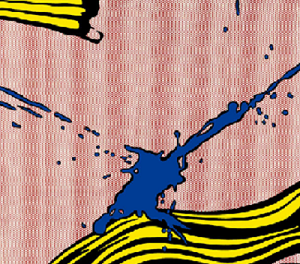Why Our MSc in Marketing and Creativity is “Not By The Book” — An Inside Look at our Unique Approach

By Marie Taillard, CMC Director
Early November is always a critical time for the Creativity Marketing team. Every year, we take stock of the lessons learnt over the past eight months of teaching the outgoing MSc students as they embark on their internships and thesis research — the last phase of the degree before graduating in June. As we take these lessons in, we also actively plan for the incoming class starting in January.
One of the particularities of the MSc Marketing and Creativity (MMK) has always been that we allow the curriculum to evolve continuously. As we observe the management and practice of marketing develop, we assess the importance and impact of each new development, and determine how to ensure it’s reflected in the programme.
This year, we are focusing on one key aspect of our programme, which we have come to refer to as “Not By The Book”. This aspect is clearly visible in two ways:
- We don’t teach “by the book” (literally, we don’t employ textbooks and rarely refer to them). Instead, we use a variety of pedagogical tools such as workshops, consultancy projects, creativity sessions, case studies, class discussions, guest seminars, internships, experiential learning and more.
- Our approach to marketing is anything but “by the book”. We get our inspiration from firms that defy conventional wisdom – both the scrappy startups built on disruptive business models and the more established players that have rewritten the rules of the game.

Roy Lichtenstein
American, 1923-1997
Brushstroke with Spatter, 1966
Chicago Museum of Art
This doesn’t mean we’ve disposed of the strong conceptual foundations of management and marketing science, or that we do not teach them in a rigorous way. Our students are all familiar with the four Ps and with the ABCs of Segmentation, Marketing and Positioning. They can analyse financial statements and understand conjoint analysis. But, they also learn to approach these concepts and practices with a critical mindset and a creative approach. Throughout the programme, students are encouraged to always challenge the obvious and to dig deeper for hidden solutions.
Our innovative pedagogy has now been decisively sanctioned “in real life” through the success of our graduates over the past six years. As they come back for open days, or share their experience in emails and on social media, our MMKs are very clear: the creative mindset that they developed in the programme has stood them in good stead.
We also hear it from their employers. Increasingly more of our internship recruiters come back to us year after year, requesting more MMKs. What’s more, many students are offered permanent positions upon the conclusion of their internships. They have the knowledge, the skills and the mindset that enable them to hit the ground running when they join an organisation.
Recent research on pedagogical styles in management also corroborates our results. In a 2012 article in the renowned Academy of Management Learning and Education journal, entitled “To ”Catch the Sparkling Glow: A Canvas for Creativity in the Management Classroom,” the authors advocate a new approach to management education, one that takes inspiration from the best art schools in the world, based on three main pedagogical features: process over outcome, interdisciplinarity and observation.
In embracing process over outcome in their teaching, “…professors use learning activities that emphasize, in the words of the School of the Art Institute of Chicago…, ‘provocative thinking and making,'” (Baker and Baker, 2012, pg. 711). One example of our process teaching is our foundational “Art and Science of Creativity” module, taught in the first couple of weeks of the programme. It is a perfect blend between the rigorous processes championed by management consultants and the creative thinking essential to advertising agency creatives. Throughout the programme, students are reminded to draw from the module and apply its process to their different projects and assignments.
A second feature identified by Baker and Baker (2012) is interdisciplinarity– bringing different disciplines to bear throughout the learning process. This aspect of art education emanates directly from the practices of artists whose inspiration comes from a wide range of subject matters and creative fields: “Picasso and Matisse, for example, combined tribal art forms with the more familiar European academic ones, and the result was French Modernism, a movement that radically changed the direction of 20th century art. (Baker and Baker, 2012, pg. 713).

Les Demoiselles d’Avignon, 1907
Pablo Picasso (Spanish, 1881-1973)
The Museum of Modern Art, New York
Interdisciplinarity is integrated in two different ways in our programme. Our students are exposed to a wide range of management disciplines beyond marketing so that they can situate their role as marketers within a broader organisation. They learn to speak the language of their finance colleagues, the product development experts, the data analysts, and the HR and strategy teams among others. MMK students are also exposed to a plethora of different sectors ranging from creative industries (fashion, luxury, design, performing arts, architecture), to consumer goods, services, retail, technology, finance, hospitality, media and more, across both B2C and B2B.
One particular sector on which we place significant emphasis is social enterprise. We believe managers must be aware of the impact of their work on society, and manage this impact productively. A 30-hour module is dedicated to this topic and includes a social impact project for which students can choose to consult to a social enterprise in Europe, or travel to Uganda or the Philippines for a two-week hands-on experiential project with a local grassroots non-profit.

Construction work with social enterprise partner Gawad Kalinga in the Philippines
The third feature which Baker and Baker advocate is observation. “The recognition of the importance of keen observation was advanced in the Renaissance when artists such as Leonardo da Vinci relied heavily on the observation of the natural world to see possibilities beyond themselves. The creative resolution of any problem began with thorough examination of the relevant observable elements. This theory of creativity found its way into the great art academies of Europe and eventually to the United States.” (Baker and Baker, 2012, pg. 716).
In the MMK, exposure to a wide range of case studies, seminars, and company visits forces our students to harness their observation skills in order to learn. We also encourage students to take on the role of anthropologists or ethnographers in their daily lives. Indeed, with their minds open to the behaviour of customers in shops or in public transport, students learn to single out unique and innovative approaches (ads, promotions, new products and services, etc), and to evaluate them critically.
The social impact project also beautifully enhances observational skills. What better way to fine tune these skills than to discover a new culture, and consumers with radically different priorities, whether halfway around the world or in one’s backyard?
Through our work with corporate partners and other organisations, we constantly find that the greatest success stories do not conform to normative “textbook” learnings. Examples of some of our best practice cases range from Boco, the French startup restaurant company offering a choice of four-star chef delicacies on-the-go in traditional Mason glass jars, to Zara, the global giant with deep roots in the Galician town of La Coruna, which invented and continues to perfect the concept and processes of fast fashion. In all cases, we see business leaders who audaciously defy conventional wisdom, whether in the development of new offerings, in their positioning, their pricing, their supply chain or distribution strategies, their promotional or communications approaches, or the way in which they manage their organisations.

This has enabled us to develop a unique approach to marketing which is based on accepting both paradox and continuous development and innovation. Examples of these paradoxes include the co-existence of rigorous data analysis and creative thinking; the tension between prioritising thorough analysis and strategic thinking on the one hand and executing flawlessly on the other; the increasing pressure to cede control to consumers while remaining “on-brand”; the seemingly insoluble and never-ending cycle between differentiation and commoditization; the reconciliation of virtual and physical distribution strategies, etc.

Over the course of the next several weeks, we will be announcing new opportunities for our students, alumni, corporate and individual partners to strengthen their relationship with us. As we develop a more robust community to continue to disseminate our “Not By The Book” approach, stay tuned this week for a major announcement! Here’s a hint: we are about to be publicly recognised and to receive important support for our research and teaching activities by an international leader in consumer products.
Useful Links

![[Day 5] Final step](https://creativitymarketing.org/wp-content/uploads/2019/11/photo-1518444353783-8ae6de077e4b-500x383.jpg)
![[Day 4] Last chance to finalise](https://creativitymarketing.org/wp-content/uploads/2019/11/FINALISATION1_rwenya-500x383.jpg)
![[Day 3] We are film makers](https://creativitymarketing.org/wp-content/uploads/2019/11/photo-1485846234645-a62644f84728-500x383.jpg)
![[Day 2] Meeting with the experts](https://creativitymarketing.org/wp-content/uploads/2019/11/COACHING2_pktmwh-500x383.jpg)
![[Day 1] Kick off](https://creativitymarketing.org/wp-content/uploads/2019/11/rvh9n9zssz1xqn5mqbid-500x383.png)